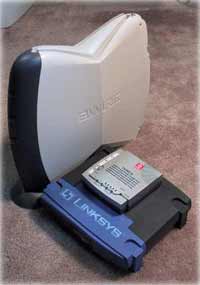Digging into Phoneline Networking and HomePNA 2.0
by Eric Hagen on December 20, 2001 12:00 PM EST- Posted in
- IT Computing
Conclusion
What product is right for you? That is the question we always ask ourselves when trying to sum up a roundup of this sort. Today, we went into a lot of detail about the technical side of the HomePNA 2.0 standard to help users better understand the technology they are buying. In the end, this knowledge will continue to help you in the future as the HomePNA 3.0 standard emerges which promises to offer 100+ Mbps over standard phonlines.

Clearly, each of the products tested today has it’s own niche. The USB adapters were a bit slower than other adapters and they cost a bit more. However, they are fully plug and play on virtually any computer you run across and they can be hot swapped to create very useful “on demand” networks. The bridges each have their strength and we captured some quality products from all three levels, from budget, to high-end.
In the end, the performance of the HPNA segment isn’t a huge issue. All of these products clearly outperform their wireless counterparts and do so at a lower cost. If running Ethernet is not an option, then HomePNA 2.0 is your best bet until HomePlug 1.0 powerline adapters start emerging.
Our commendation has to go to the 2wire HomePortal 100w for its excellent performance and mass of features (Ethernet, HPNA 2.0, 802.11b, USB). It seems like there’s more potential in that box so we might be watching out for a new release from them sometime in the future. If you’re not willing to spend $400 on a home router, either of the other two routers worth consideration. The TH102A is the least expensive and offers most of the features of the more expensive Linksys. However, if you need to use it as a home gateway router and have both HPNA and Ethernet networks already in place, you will find yourself sticking with the HPRO200 for its 100 Mbps LAN port.










0 Comments
View All Comments